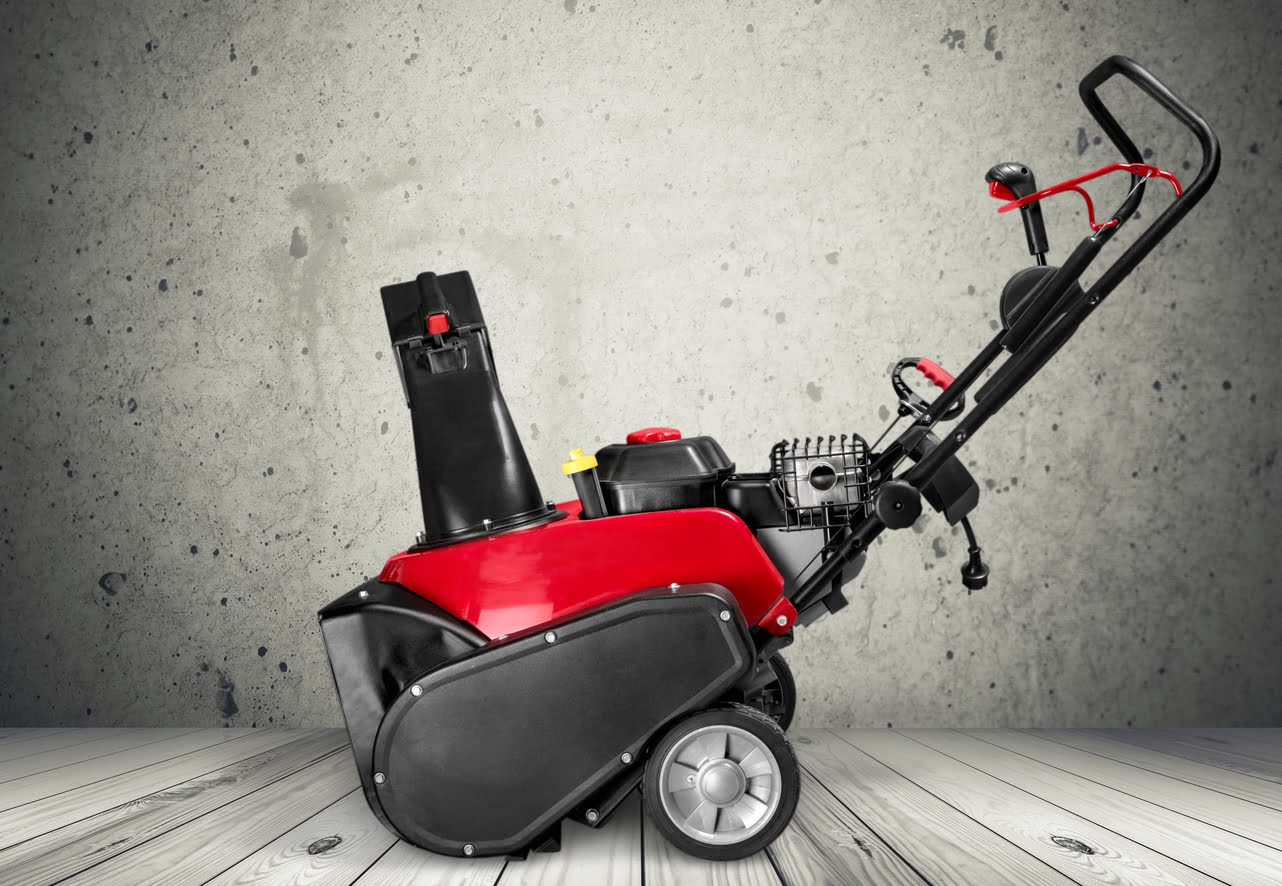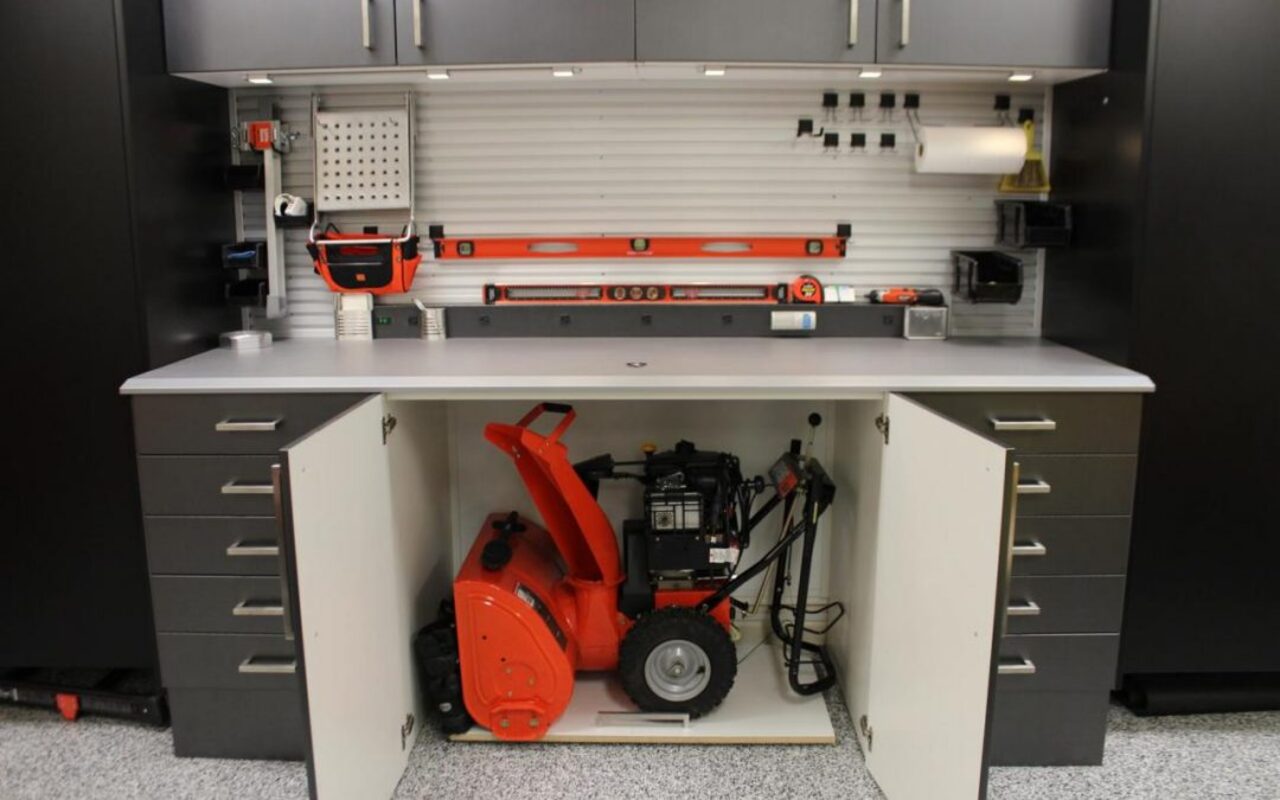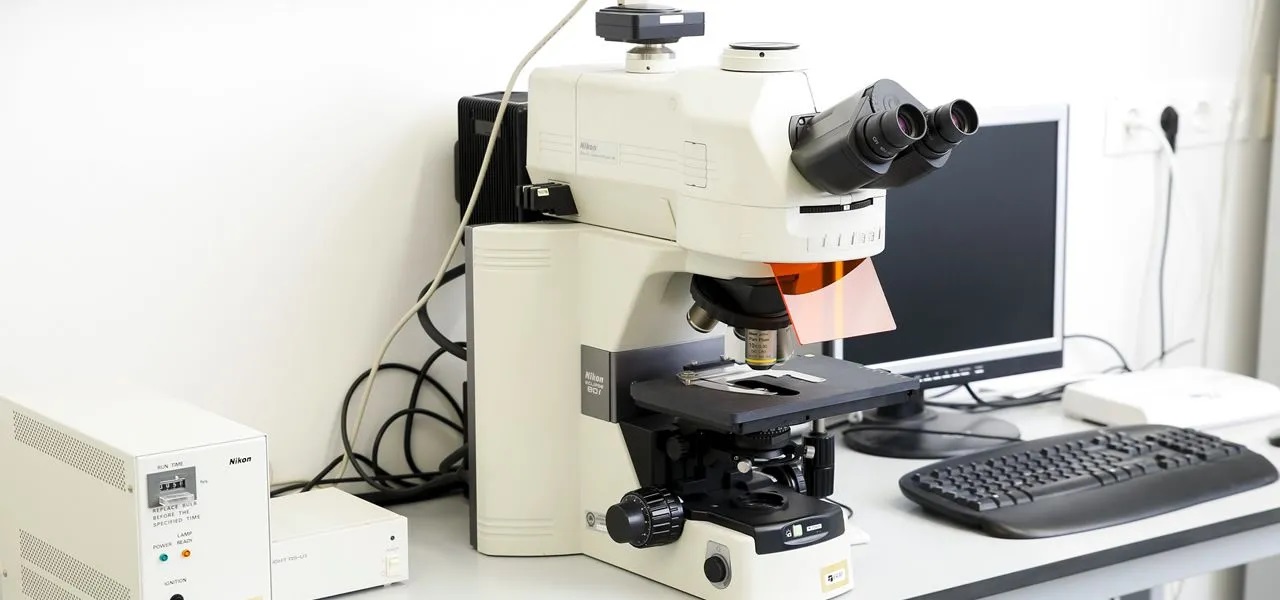

Articles
How To Store Snowblower
Modified: February 22, 2024
Learn effective ways to store your snowblower during the off-season with our informative articles. Keep your snowblower in top condition and ready for the next winter.
(Many of the links in this article redirect to a specific reviewed product. Your purchase of these products through affiliate links helps to generate commission for Storables.com, at no extra cost. Learn more)
Introduction
Welcome to the comprehensive guide on how to properly store your snowblower. As winter comes to an end and the need for snow removal diminishes, it’s essential to store your snowblower in a way that ensures its longevity and performance for the following winter season. A well-maintained snowblower not only saves you time and effort but also prevents costly repairs down the line.
Proper storage involves several important steps, including choosing an appropriate storage location, cleaning and preparing the snowblower, draining fuel and oil, removing the spark plug, lubricating moving parts, and protecting the equipment from rust.
In this article, we will guide you through each step of the snowblower storage process, providing expert tips and insights to ensure that your snowblower remains in top shape during its downtime.
So let’s dive in and learn how to store your snowblower correctly to protect your investment and be ready for the next winter season!
Key Takeaways:
- Choose a suitable storage location to protect your snowblower from rust and environmental damage. Opt for a dry, clean, and well-ventilated area, preferably indoors, and ensure it’s easily accessible.
- Properly prepare your snowblower for storage by cleaning, lubricating moving parts, draining fuel and oil, and protecting it from rust. Follow helpful tips for long-term storage to ensure optimal performance when winter returns.
Read more: How To Store A Snowblower
Choosing a Storage Location
When it comes to storing your snowblower, choosing the right location is crucial. The ideal storage space should be dry, clean, and well-ventilated to prevent any moisture buildup and inhibit the growth of rust. Here are a few factors to consider when deciding on a storage location:
- Indoor versus Outdoor: Whenever possible, it is recommended to store your snowblower indoors. This provides maximum protection against elements such as rain, snow, and extreme temperatures. If indoor storage is not feasible, consider using a weatherproof cover to shield your snowblower from the elements.
- Temperature and Humidity: Extreme temperatures and high humidity can cause damage to your snowblower. Opt for a storage space where the temperature remains consistent and humidity is low. Avoid areas prone to moisture, such as basements or crawl spaces.
- Accessibility: Choose a storage location that is easily accessible. This will make it convenient for you to perform routine maintenance tasks and retrieve the snowblower when needed.
- Space Restrictions: Ensure that the storage area has enough space to accommodate your snowblower comfortably. Consider any additional attachments or accessories that need to be stored alongside the snowblower.
- Security: If storing your snowblower in a communal area, such as a shared garage or shed, make sure to take security measures to protect your equipment. Invest in a sturdy lock or use a designated storage unit that offers enhanced security features.
By considering these factors, you can select a suitable storage location that will help prolong the lifespan of your snowblower and ensure it remains in optimal condition.
Cleaning and Preparing the Snowblower
Before you store your snowblower, it’s important to give it a thorough cleaning to remove any dirt, debris, or salt that may have accumulated during the winter season. Follow these steps to clean and prepare your snowblower for storage:
- Disconnect the spark plug: This prevents accidental starts while you’re working on the snowblower. It’s an essential safety measure.
- Remove any loose snow and debris: Use a brush or broom to remove any remaining snow or ice from the snowblower’s auger, chute, and housing. Take care not to damage any delicate components in the process.
- Inspect the belts and auger: Check the condition of the belts and auger for any signs of wear or damage. If you notice any issues, it’s best to address them before storing the snowblower.
- Wipe down the exterior: Use a clean cloth or sponge to wipe down the exterior of the snowblower. This helps remove any dirt, grease, or salt that may have accumulated during use.
- Clean the engine: Use a brush or compressed air to remove dust and debris from the engine. Be cautious around sensitive parts and avoid using excessive force.
- Lubricate moving parts: Apply a light coating of lubricant to the moving parts, such as the auger shaft and chute mechanism. This helps prevent rust and ensures smooth operation when the snowblower is put back into use.
- Check the tires: Inspect the tires for any damage or excessive wear. Inflate them to the recommended pressure if needed. Properly inflated tires ensure improved traction and maneuverability when using the snowblower next season.
By cleaning and preparing your snowblower for storage, you remove any potential sources of damage and ensure that it’s ready to go when the next snowfall arrives. Proper maintenance and care go a long way in preserving the longevity and performance of your snowblower.
Draining Fuel and Oil
One of the key steps in preparing your snowblower for storage is to properly drain the fuel and oil. Storing your snowblower with old or contaminated fuel can lead to fuel system issues and potentially damage the engine. Follow these steps to drain the fuel and oil from your snowblower:
- Run the snowblower: Start the snowblower and let it run for a few minutes. This helps warm up the engine and makes the fuel and oil easier to drain.
- Turn off the snowblower: Once the engine is warmed up, shut off the snowblower and disconnect the spark plug wire for added safety.
- Drain the fuel: Locate the fuel shutoff valve or fuel line and turn it to the off position. Next, place an appropriate container beneath the fuel tank and remove the fuel tank cap. Carefully tilt the snowblower to pour out the remaining fuel. Avoid spilling fuel on the engine or any other components.
- Dispose of the fuel properly: Properly dispose of the drained fuel according to local regulations and guidelines. Do not dispose of it in the trash or pour it down the drain, as it can be harmful to the environment.
- Drain the oil: Locate the oil drain plug beneath the snowblower’s engine. Position a suitable container beneath the drain plug and remove it to allow the oil to drain out completely. Allow sufficient time for the oil to drain completely, then reinstall the drain plug.
- Refill with fresh oil: Once the oil has been drained, follow the manufacturer’s guidelines to refill the snowblower with fresh oil before using it again.
By draining the fuel and oil from your snowblower before storage, you prevent the formation of stale fuel and the accumulation of contaminants. This ensures that your snowblower is ready to run smoothly when you take it out of storage for the next winter season.
Removing the Spark Plug
As part of the snowblower storage process, it’s important to remove the spark plug. This prevents accidental sparks and helps protect the engine during the storage period. Follow these steps to safely remove the spark plug:
- Prepare the snowblower: Ensure that the snowblower is turned off and the engine is cool before attempting to remove the spark plug. Disconnect the spark plug wire to prevent accidental starts.
- Locate the spark plug: The spark plug is typically located on the engine’s cylinder head. Refer to the snowblower’s user manual to find the exact location of the spark plug.
- Clean the area around the spark plug: Use a brush or compressed air to remove any dirt or debris around the spark plug. This prevents any contaminants from falling into the combustion chamber while removing the plug.
- Remove the spark plug: Use a spark plug socket and ratchet to loosen and remove the spark plug. Turn it counterclockwise until it is fully loose, and then carefully pull it out of the cylinder head.
- Inspect the spark plug: Once the spark plug is removed, carefully inspect it for any signs of damage or excessive wear. Look for any build-up of carbon or oil deposits. If the spark plug appears to be in poor condition, it may need to be cleaned or replaced.
- Store the spark plug: To ensure the spark plug remains in good condition during storage, place it in a clean, dry, and secure location. Avoid exposing it to extreme temperatures or moisture.
- Replace the spark plug: Before using your snowblower again, remember to reinstall the spark plug and securely tighten it according to the manufacturer’s specifications.
By removing the spark plug before storing your snowblower, you reduce the risk of accidental starts and protect the engine from potential damage. It’s a simple yet crucial step in the proper maintenance and care of your snowblower.
When storing a snowblower, be sure to drain the fuel and run the engine until it’s out of gas to prevent carburetor clogs. Store in a dry, covered area to protect from rust and damage.
Read more: How To Store A Snowblower Outside
Lubricating Moving Parts
Lubricating the moving parts of your snowblower is an essential step in its storage maintenance routine. Proper lubrication helps prevent rust, corrosion, and friction, ensuring that the machine operates smoothly when it is brought out of storage for use. Follow these steps to lubricate the moving parts of your snowblower:
- Refer to the user manual: Consult the snowblower’s user manual to determine the specific lubrication points and recommended lubricants for your machine.
- Clean the parts: Before applying any lubricant, clean the moving parts using a cloth or brush to remove any dirt or debris that may have accumulated.
- Apply lubricant: Use a high-quality, all-purpose lubricant or a lubricant recommended by the manufacturer. Apply a small amount of lubricant to the designated moving parts, such as the auger shaft, chute mechanism, and any other areas specified in the user manual.
- Distribute the lubricant: Once applied, manually move the parts back and forth to distribute the lubricant evenly. This ensures that all surfaces are properly coated.
- Check the control cables: Inspect the control cables to ensure they are functioning smoothly. Apply a small amount of lubricant to the control cables if necessary. This helps prevent stiffness and ensures proper control of the snowblower when it is used again.
- Wipe off excess lubricant: After lubricating the moving parts, use a clean cloth to wipe off any excess lubricant. This helps prevent dirt and debris from sticking to the lubricant and causing potential issues when the snowblower is put back into use.
Lubricating the moving parts of your snowblower before storage helps maintain their functionality and performance. By following these steps, you can ensure that your snowblower is ready to tackle the snow effectively and operate smoothly when the next winter season arrives.
Protecting the Snowblower from Rust
Rust is one of the biggest enemies of any outdoor equipment, including snowblowers. To ensure that your snowblower stays in top condition, it’s important to take measures to protect it from rust during storage. Follow these steps to safeguard your snowblower against rust:
- Clean and dry: Before storing your snowblower, make sure it is thoroughly clean and dry. Remove any dirt, debris, or moisture that may be present on the machine. Dry the snowblower completely to prevent any lingering moisture from promoting rust formation.
- Apply a rust inhibitor: Use a rust inhibitor or corrosion-resistant spray to coat the snowblower’s metal surfaces. Pay special attention to areas prone to rust, such as the auger, chute, and any exposed metal parts. Follow the manufacturer’s instructions for applying the rust inhibitor.
- Use a protective cover: Invest in a high-quality protective cover designed specifically for snowblowers. Covering your snowblower helps shield it from moisture, dust, and other environmental factors that can contribute to rust formation. Ensure that the cover fits securely and completely covers the entire machine.
- Store in a dry location: Choose a storage location that is dry and well-ventilated. Avoid areas with excessive humidity or moisture, as they can accelerate the formation of rust. If necessary, use a dehumidifier or moisture-absorbing products to maintain a dry environment.
- Regularly inspect and maintain: Periodically check on your snowblower during storage to ensure that rust or corrosion is not developing. If you notice any signs of rust, remove it promptly using a wire brush or rust remover, and reapply a rust inhibitor. Additionally, perform routine maintenance tasks such as cleaning and lubrication as recommended by the manufacturer.
By taking these preventive measures, you can significantly reduce the risk of rust formation and prolong the lifespan of your snowblower. Proper maintenance and protection from rust will ensure that your snowblower remains reliable and ready to tackle the snow when winter arrives.
Storing the Snowblower
Properly storing your snowblower is essential to ensure its longevity and performance. Following the correct storage methods will help protect your equipment from damage and keep it in optimal condition until the next winter season. Here are the steps to store your snowblower:
- Fold or collapse the handles: If your snowblower has foldable or collapsible handles, fold them down to save storage space. Ensure that they are securely locked in place to prevent accidental unfolding.
- Secure loose parts: Check for any loose parts or accessories and secure them properly. This includes securing power cords, attachment brackets, or any other detachable components to avoid misplacing or damaging them during storage.
- Place your snowblower in the storage location: Position the snowblower in the chosen storage location, making sure it is stable and won’t tip or fall over. Avoid placing any heavy objects on top of the snowblower, as this could cause damage.
- Cover the snowblower: Use a high-quality cover specifically designed for snowblowers to protect it from dust, debris, and other potential hazards. Ensure that the cover provides a secure and snug fit over the entire machine.
- Store it upright: Whenever possible, store your snowblower upright to minimize the chances of fuel or oil leakage. If upright storage is not feasible, make sure to drain the fuel and oil completely before storing it horizontally.
- Keep it in a dry environment: Store your snowblower in a dry storage area to prevent moisture buildup. Moisture can lead to rust or mold formation, which can damage your equipment over time.
- Protect it from extreme temperatures: Avoid storing your snowblower in areas that experience extreme temperatures, as they can affect the integrity of its components. Extreme cold or heat can cause rubber parts to crack or metal parts to expand and contract, leading to potential damage.
- Keep it out of reach of children or pets: Ensure that your stored snowblower is safely stored in an area that is inaccessible to children or pets. This minimizes the risk of accidental injury or damage.
Properly storing your snowblower using these guidelines will help maintain its performance and extend its lifespan. Following the correct storage practices ensures that your snowblower remains in top shape and ready to tackle the next winter season with ease.
Tips for Long-Term Storage
Long-term storage of your snowblower requires special attention to ensure its proper preservation. Here are some helpful tips to keep in mind for long-term storage:
- Change the oil: Before storing your snowblower for an extended period, consider changing the oil. Fresh oil helps prevent the buildup of contaminants that can cause damage over time. Refer to the manufacturer’s recommendations for oil change intervals.
- Use fuel stabilizer: If you plan to store your snowblower for more than a month, add a fuel stabilizer to the remaining fuel in the tank. This helps prevent fuel degradation and keeps the fuel fresh during storage.
- Remove the battery: If your snowblower has a battery, remove it before storing. Place it in a cool, dry location and keep it charged periodically to maintain its performance.
- Check and replace worn parts: Before storing, inspect your snowblower for any worn or damaged parts, such as belts, augers, or scraper bars. Replace any necessary parts to ensure optimal performance when you use the snowblower again.
- Keep rodents away: To prevent rodents or pests from nesting in your snowblower, store it in an area that is well-protected and sealed. You may also place mothballs or cotton soaked in peppermint oil near the machine, as rodents tend to dislike these scents.
- Perform periodic maintenance: Even during storage, it’s important to perform periodic maintenance tasks. This includes checking the tire pressure, inspecting the fuel lines, and ensuring all connections are secure. Regular maintenance prevents any issues from being overlooked or becoming worse over time.
- Keep a record: Document the maintenance and storage steps you have taken for your snowblower, including dates and any repairs or replacements made. This helps you keep track of its history and ensures that you don’t miss any critical maintenance tasks.
- Prepare for storage in advance: Start the preparation for long-term storage well before the season ends. This allows ample time for necessary maintenance, repairs, and gathering any required supplies or accessories.
By following these tips, you can ensure that your snowblower remains protected and stays in optimal condition during long-term storage. Taking the time to properly store and maintain your equipment will ensure that it is ready to deliver reliable performance when the next winter season arrives.
Read more: How To Store Snowblower For Summer
Conclusion
Properly storing your snowblower is crucial to ensure its longevity and maintain its performance. By following the steps outlined in this comprehensive guide, you can effectively store your snowblower and protect it from damage during the off-season. Here are the key takeaways:
Choosing a suitable storage location is essential. Opt for a dry, clean, and well-ventilated area, preferably indoors, to minimize the risk of rust and other environmental damage. Ensure the storage location is easily accessible and offers sufficient space for your snowblower.
Before storage, clean and prepare your snowblower by removing debris, inspecting and lubricating moving parts, and ensuring tires are properly inflated. Drain the fuel and oil to prevent degradation and damage to the engine. Remove the spark plug for safety and store it in a secure location.
Protecting your snowblower from rust is crucial. Clean and dry the machine thoroughly, apply a rust inhibitor, and use a protective cover. Store the snowblower upright if possible, in a dry environment where extreme temperatures are avoided.
Lastly, consider helpful tips for long-term storage, such as changing the oil, using fuel stabilizer, removing the battery, and regularly performing maintenance tasks.
By taking these steps, you can ensure that your snowblower remains in optimal condition, ready to tackle the next winter season. Proper storage and maintenance will ultimately save you time, effort, and potential costly repairs. So, invest the time now to properly store your snowblower and enjoy the benefits when winter returns!
Frequently Asked Questions about How To Store Snowblower
Was this page helpful?
At Storables.com, we guarantee accurate and reliable information. Our content, validated by Expert Board Contributors, is crafted following stringent Editorial Policies. We're committed to providing you with well-researched, expert-backed insights for all your informational needs.














0 thoughts on “How To Store Snowblower”